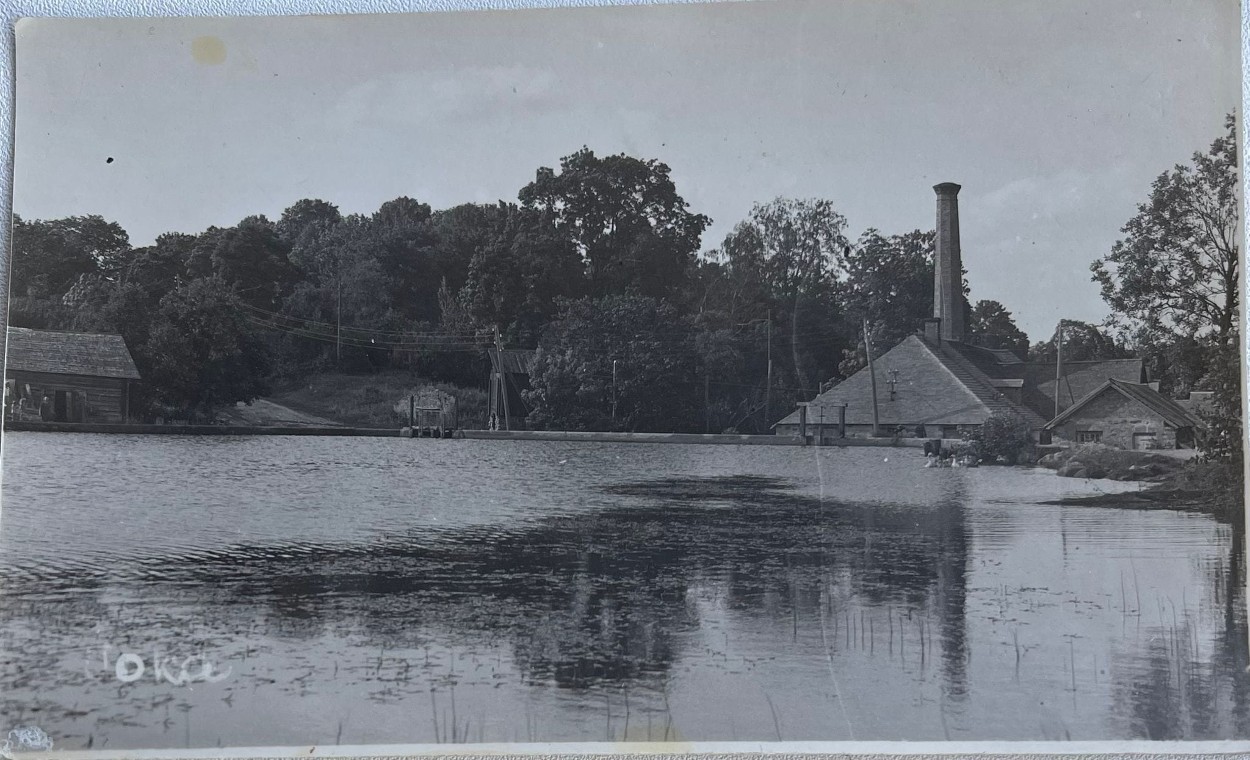Voka Reservoir and Reasons for its Development
The infancy of the Voka Reservoir dates back to the ancient times of the Voka Manor, when the river flowing into the Gulf of Finland, resembling a stream, was dammed up near the manor complex. This river, with a rather small flow rate, has been called by several names. For instance, at the beginning of the 20th century, locals knew the upper reaches of the river as Vasavere River, the middle reaches as Konju River, and the lower reaches as Voka River. Today, the river passing through the Voka Reservoir officially bears the name Voka River, originating approximately 6 km south of Vasavere River's mouth. The latter, in turn, originates from Lake Kurtna Suurjärv.
The damming of the river was motivated by economic needs, primarily to operate the manor's vodka and flour mills. The exact time when the dam and the factories were established is not precisely known, but it is known that the vodka distillery operated here before 1781. We can still see the ruins of both factories next to the dam today. It's difficult to determine the age of the surviving pieces of masonry, as it's likely that the manor buildings were repeatedly expanded and rebuilt over time. At that time, the reservoir behind the dam was probably not very large, and water power was also obtained using a high waterfall or a ledge, which was located above the current dam near the factories.
The 1926 topographic map already shows the reservoir in a form quite recognizable today. True, it was slightly smaller, which was probably due to the fact that the height of the dam was much lower. Also, even back then, there was a peninsula between the branches of the lake.
The reservoir acquired its current size and appearance in 1973 when it was emptied, and its bed was widened and cleaned. Additionally, a higher dam was built, raising the height of the reservoir to about 5 m.
In 1990, a project was completed to reconstruct the Voka Manor's watermill-vodka distillery (architect Urmas Arike), which envisioned building a new building essentially in place of the ruins. The building was intended to become the cultural and medical center of the "Kaljurand" collective farm. The area behind the dam and the current Metsapargi Street, which runs over the dam, would also be landscaped and reconstructed. However, these plans were not realized. The dam was last renovated in 2020.
Currently, the area of the Voka Reservoir is 3.3 ha (according to other data, 3.6 ha), with a shoreline length of 1881 m (according to other data, 1901 m). The length of the lake is 560 m (according to other data, 630 m), and the width is 50 m. As the numbers show, it is an elongated and relatively narrow body of water. Its shape is made more interesting by a long narrow peninsula that extends to the middle of the lake, with narrow branches resembling "pants" on both sides. The longer branch is located above the natural bed of the Voka River.
Today, the Voka Reservoir and its shores are popular recreational areas among locals. Here, people enjoy both summer and winter swimming, boating, or simply admire the beauty of the water from the windows of the houses along the lake shore. Additionally, professional sports competitions are organized here, and the frozen surface of the lake is suitable for winter sports. Amateur fishermen also operate here. The most common fish species in the lake include pike, perch, burbot, roach, and minnow, among others.
The pine-covered slopes of the peninsula are also a popular walking area. It does not have an official name, but locals know it as Somka or Sompka, possibly named after a traditional Finnish sauna that was once located at the tip of the peninsula.
Author: Madis Tuuder, translated with ChatGPT

